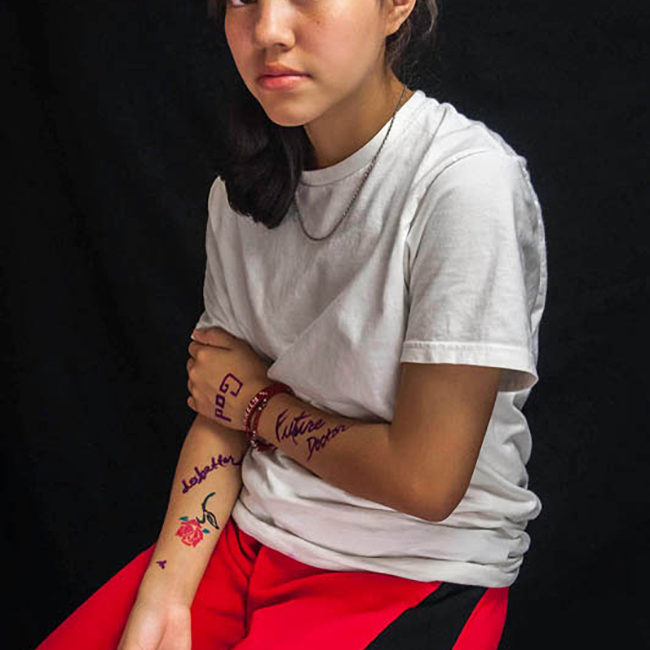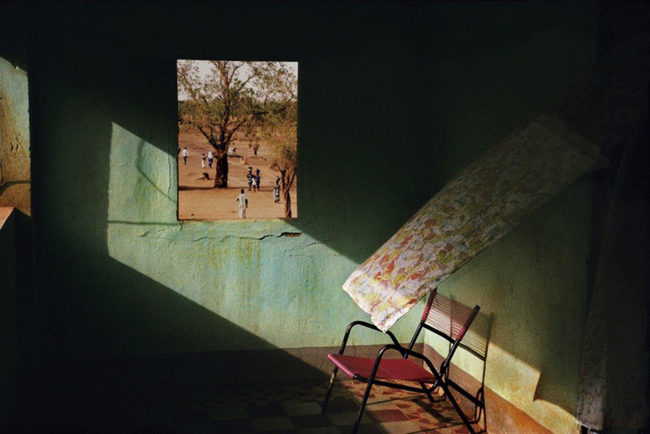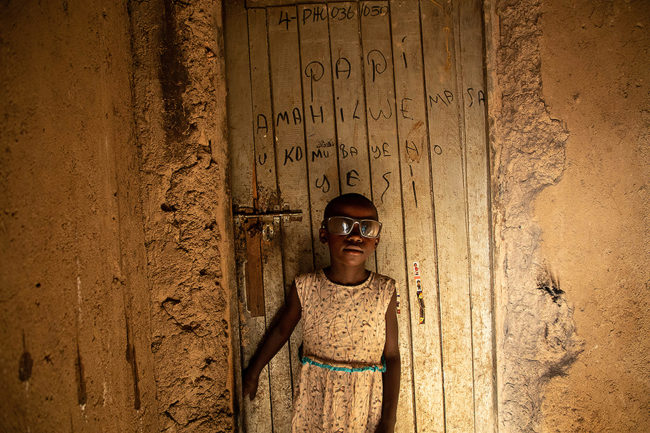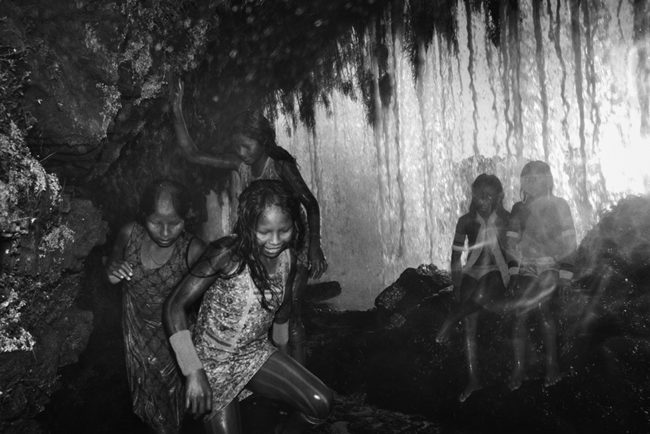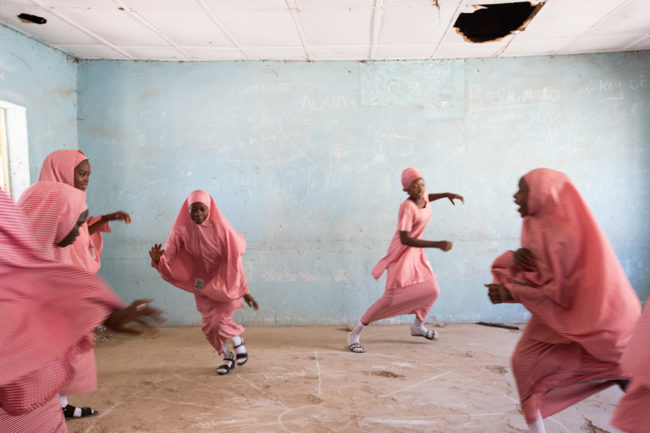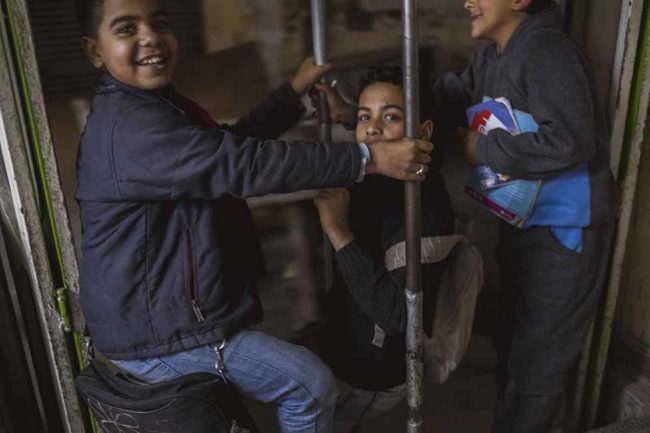Karen Marshall was in her mid-twenties when she began making the photographs in “Between Girls: A Passage to Womanhood 1985-2015,” a show on view at Hampshire College until November 17. She was almost a decade older than her teenage subjects, “too old to be their sister, not old enough to be their mom,” she tells PDN. Grappling with what it meant to be a documentary photographer, Marshall was interested in finding a project that looked at “the opposite of a conflict situation,” she says, focusing instead on ways we get along and define ourselves. Feeling there was a gap in the stories of women coming of age, Marshall wanted to document the language and rituals of teenage girls by looking at the emotional bonds they form. Asking around, “a friend’s husband said ‘Oh my goodness I know who you have to get in touch with—Molly Brover!’” recalls Marshall. She called Brover, and they agreed to meet at her Upper West Side apartment. “She seemed to immediately understand what I was interested in,” Marshall says. Vivacious and social, Brover introduced Marshall to her group of friends and for ten months, Marshall photographed the girls as they lived regular New York teenager lives—in her black and white pictures, they sprawl on bedroom floors, eat in diners, go to parties, smoke cigarettes and laugh.
But the straightforward project that Marshall began took a terrible turn—while on vacation in Cape Cod, Brover was hit by a car and killed. The tragedy was devastating for her friends, and it put Marshall’s pictures in a new light—her photos were now a record of someone who was gone. “I realized that Molly would remain 17, and the rest of them would become women,” Marshall says. With some hesitation, she decided to continue the project, photographing members of the group as they traveled into adulthood.
Thirty years later, it’s still difficult for the women make sense of Brover’s death. “They’re still grappling with it,” Marshall says. “It’s painful.” In her photos, the women have grown into adult lives, some with children of their own. One told Marshall that she relates to Brover’s death differently now that she is herself a mother, thinking about the loss from the perspective of her friend’s parents. The Hampshire show chronicles Marshall’s own attempts to make sense Brover’s death, including the many forms the project has taken over the years, from video and audio recordings to books. In the show there are prints from the year of bonding, triptychs showing individuals as teens and in their 20s and 30s, a case with copies of Brover’s diary and writing from the girls after she died, a three-screen video showing interviews Marshall made with the women as they approached 40, a collection of small books, each edited around a single person or theme from the project, Xeroxes of book dummies, a rejection letter from Aperture, a wall of Instagram photos. Together, they suggest the collective memory of a particular time and place, and describe the way it has stayed with those who lived through it and shifted as they change. Always interested in questions of narrative, Marshall had tried different ways of telling a story that may be, in the end, incomprehensibly sad. “Putting things together, making sense of things is the essence of what I do,” says Marshall.
Related Stories:
